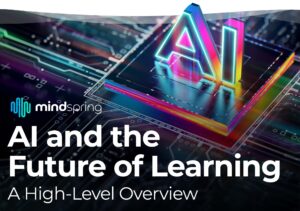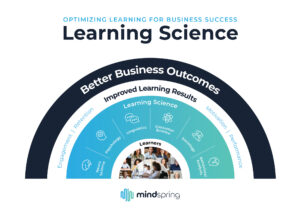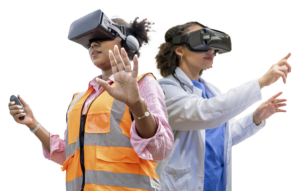Organizations and companies around the globe are constantly brainstorming strategies to stay on the cutting edge. In product development, marketing, and customer service, the next big thing is almost always the objective. When it comes to corporate learning initiatives, innovation based on best practices is also always the goal. At Inno-Versity, here’s how we’re seeing corporate learning evolve and change:
Instructor-Led Training
Instructor-led training, or ILT, is very familiar to most people, as it most closely mirrors the formal education we receive from a young age. At its core, it consists of a knowledgeable instructor, a curriculum, and one or more learners. Traditionally, ILT takes place in a physical location, within a scheduled, allotted amount of time. Over the past two decades though, it’s been exciting to see how even this most traditional form of corporate learning has seen some changes in regards to technology and form.
As ILT is still a very popular and effective delivery method for corporate learning initiatives, several methods for integrating technology have been designed and implemented to great success. VILT, or video instructor-led training, takes the need for physical proximity out of the picture by pre-recording the instructor, or alternately, live-streaming the session. This makes ILT more convenient and accessible as today’s workforce becomes increasingly far-flung, while still maintaining the face-to-face interaction of traditional ILT.
Another variation of ILT is blended learning, which combines a classroom-like setting with some type of online learning module. This allows participants to learn basic information on their own time, then work on comprehension, understanding, and synthesis with the instructor and their peers. This makes better use of classroom time and interaction creating effective learning.
Macro and Microlearning
Today, we engage in continuous learning without ever realizing it. With our almost constant access to information via the internet, it’s no surprise that our society is always learning. From Youtube videos to Wikipedia entries to podcasts, much of the media we consume is of an educational nature. For corporate learning initiatives, continuous learning mean supplying learning opportunities and content where employees wanted to find them, namely on Youtube and other media-sharing sites. This is a trend that is still very much alive, especially with the distinction between microlearning and macrolearning.
Microlearning has consistently topped the lists of trends to watch in corporate learning for several years now due to the simple yet effective concept that short, repetitive lessons are more accessible to the modern worker. For people on-the-go, a three-minute video is likely much easier to commit to than an hour-long training module, and is also much more helpful when the knowledge is needed immediately. Microlearning lends itself naturally to continuous learning, as employees can learn what they need to know about an evolving workplace on the fly, while still staying productive.
Macrolearning, on the other hand, is more analogous to the aim of traditional corporate learning initiatives, such as onboarding and compliance training. It offers a complete curriculum of knowledge, from baseline to expert-level, that is offered through content and materials distributed by the organization. Yet, despite the connection with yawn-inducing training sessions, macrolearning is far from obsolete, and has some distinct advantages to an all-microlearning approach that have ushered in the latest developments in learning practices.
Digital Learning
Digital learning combines all of these learning delivery modules and capitalizes on our digitally connected society. More a theory of learning than a method of delivery, digital learning combines ILT, micro and macrolearning, eLearning, and the learning we experience every day as we interact with the world into a single, trackable experience. With the use of digital learning in its varied modes,, organizations are able to see the interaction of their employees with learning materials and track their experience and growth. While this may seem rather “1984,” digital learning is very much in line with how people use social media and browse the internet, and lends itself to more targeted, personal, and effective learning initiatives that help to nurture employees.
Our society’s rapid development and adoption of so many personalized technologies has changed the way we think about learning, and in turn, corporate learning. While we at Inno-Versity fully expect the landscape to continue to change, we’re excited about the direction that the industry is travelling, and we’re ready to tackle the challenges.









